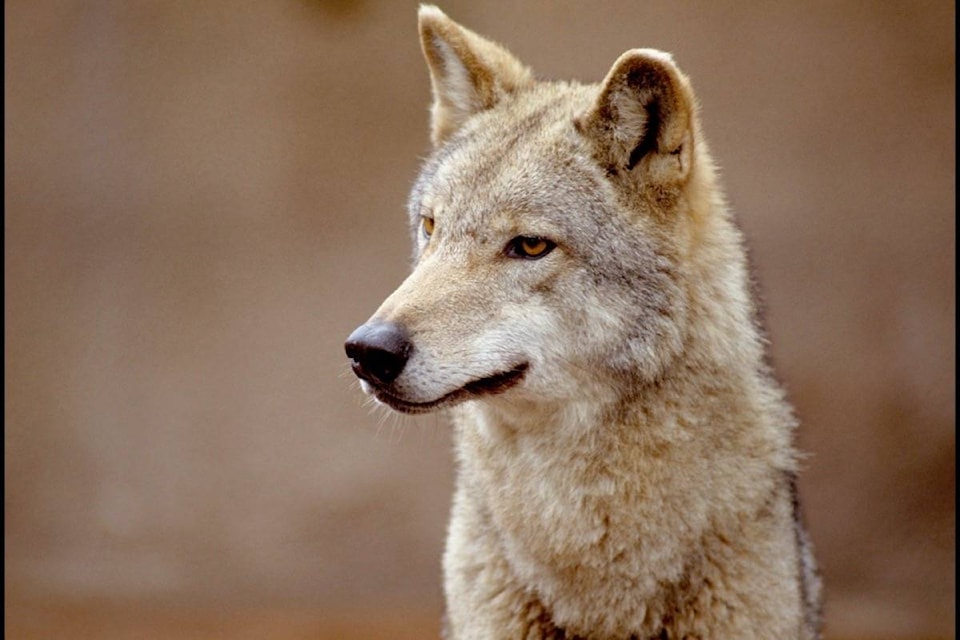A stately grey canine saunters by Jane Nicholson’s Shavers Bench home every morning around 8 a.m.
But it’s not a dog - it’s a coyote.
The Trail senior is warning neighbours, pet owners and especially parents with children walking to school that the coyote might appear to be someone’s healthy dog - but it’s a wild animal that can be dangerous.
Jane was standing behind her gate the first morning she spotted him - she says the coyote is definitely male - when she started to talk to him thinking the dog was stray.
“Then he lifted his tail and I knew this is no dog, it’s a coyote, ” she told the Trail Times, explaining coyotes have much thicker tails and straight large ears.
“And I was happy we had a fence between us because he looked straight at me before he pranced off,” Jane stressed. “As much as I know animals and wild animals I went to pet him and that is what has me worried because of the young kids going down to the school, if they don’t have any parents with them.”
The coyote has a charcoal coat with a dark stripe down its back and black markings on it’s rib cage.
“He’s well built with a beautiful coat and his face is very much like a dog,” Jane said. “But kids need to know to stay away, it’s not a dog, and pet owners need to keep their cats and dogs inside.”
Urban expansion provide increased food opportunities for Canis latrans, or coyotes, which are a mid-sized wild dog species. WildsafeBC advises anyone who encounters a coyote that behaves aggressively to make yourself appear large and maintain eye contact, speak in a low firm voice or shout, wave your arms and make noise. If the coyote continues to approach, do not run or turn your back on it, continue looking large and making noise while slowly retreating. Move towards more people or into your home or vehicle.
“He is through here everyday,” said Jane. “Sometime early, usually between 6 and 9 (a.m.) he does the loop towards Glenmerry and the first time I saw him he was filled out, so he’s definitely hunting.”
Interestingly, as a child, Jane used to spend summers at her grandparent’s homestead in Robson. She gained experience with wildlife back then by helping nurse young abandoned wild animals such as a cougars and bear cubs that were re-homed to the Robson Zoo, which she refers to as the Woodrow Zoo.
One of her favourite memories is caring for a very young cougar.
“I had brought up this little cub,” she reminisced. “After he got a little older he was transferred down to Hollywood and he was in the movies.”
Beginning in 1948, Allen Woodrow, a Cominco electrician, cared for orphaned fawns, cubs, coyotes and cougars on his Robson acreage.
